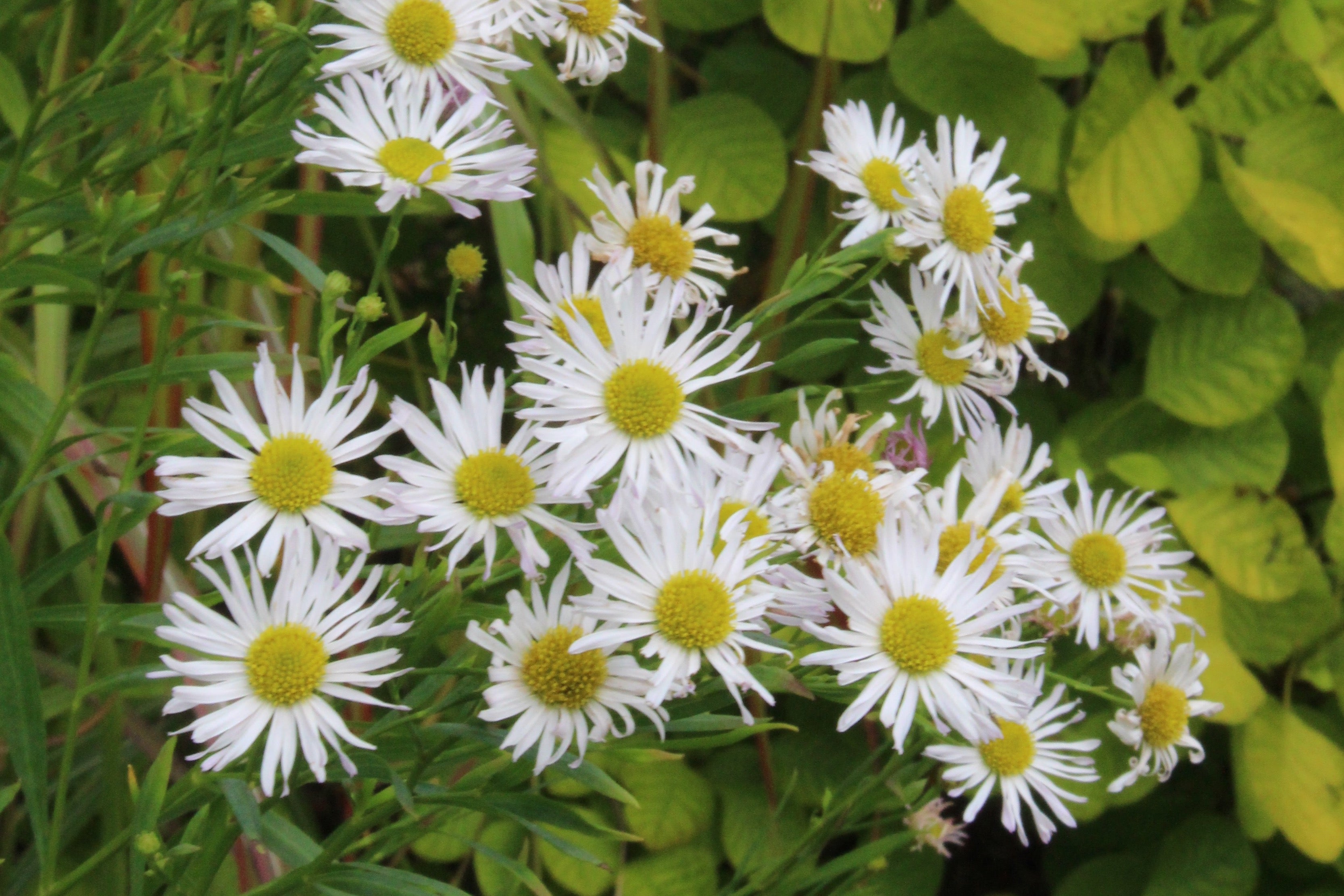Boltonia asteroides var. latisquama 'Snowbank'
Approx. 0.5 litre pot
About this cultivar:
Boltonia asteroides var. latisquama 'Snowbank' is noted for its compact habit. It features linear, lance-shaped, grayish-green leaves on erect, usually branching stems and tiny, pure white, daisies (white rays with yellow centre disks) in loose panicles which cover this aster-like plant with a profuse bloom from late summer to early autumn. Looking something like a snow bank.... An introduction of the New England Wild Flower Society. Makes a great cut flower!
Wee video from the USA for info:
The variation latisquama features slightly larger flower heads which bloom in denser inflorescences. Native to the central U.S. from North Dakota to Wisconsin south to Oklahoma and Arkansas with a disjunct population in New England. The specific epithet means resembling asters in obvious reference to flower similarity.
Ours grows taller than in the video - the USA gets more sun! Can be a bit floppy, but worth it.
- Position: Full sun, partial shade
- Soil: Almost any soil, grows well in Ballyrobert
- Flowers: September, October, November, December
- Other features: Grows well in Ballyrobert, Cut Flowers or Dried Flowers
- Hardiness: H7 - Hardy in the severest European continental climates (< -20°C), Fully hardy - grows well in Ballyrobert!
- Habit: Clump forming, bushy
- Foliage: Deciduous
- Height: 120 - 150 cm (4 - 5 ft)
- Spread: 45 - 75 cm (1.5 - 2.5 ft)
- Time to full growth: 2 to 5 years
- Plant type: Herbaceous Perennial
- Colour: Green, yellow, white
- Goes well with: Early flowering plants (like Lupins, Delphiniums and Papaver) in order to keep interest in that area once the earlier flowering plant has faded. However they also pair well with flowers such as Amsonia, Aolidago, Rudbekia, Helenium, Helianthus, and grasses such as Stipa.
About this genus:
Boltonia is a genus of plants in the sunflower family (Asteraceae) native primarily to wetlands in North America with one species in eastern Asia. It contains between 6-20 species depending on who you ask. Common names vary by the species but include white dolls daisy, false aster, and False chamomile. The genus name Boltonia is from the English naturalist and illustrator James Bolton (1735–1799), who wrote and illustrated the first english-language work on fungi, "An History of Fungusses growing about Halifax."
They are robust perennial plants with thin stems covered in lance-shaped leaves, often reaching several feet tall, depending on the species. From late summer to early autumn most species produce lots of tiny, white, daisy-like flowers with large yellow centres, however some varieties also produce yellow centre disks tinged with pink, violet, or purple.
Native to wetlands these should do well in wet soils, perhaps even waterlogged areas. They also don’t mind a good bit of shade, despite being a member of the sunflower family! However, if conditions get too shady, the stems may not grow thick enough to support the plant. Similarly, its thin stems mean you might not like it in windy areas, however a bit of movement in the breeze can add interest to a border…
Like Aster, you can try to pair with early flowering plants (like Lupins, Delphiniums and Papaver) in order to keep interest in that area once the earlier flowering plant has faded. However they also pair well with flowers such as Amsonia, Aolidago, Rudbekia, Helenium, Helianthus, and grasses such as Stipa.




